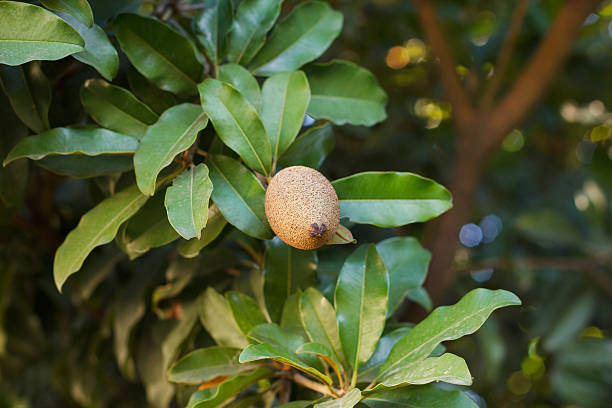If you’re looking to grow a fruit tree in India that rewards you with rich taste, steady yield, and minimal fuss, Sapota (Chikoo) should be at the top of your list. Native to tropical regions and deeply loved across the country, the Sapota tree is a powerhouse of sweetness and nutrition. It flourishes in Indian climates, requires low maintenance, and offers year-round shade and fruit. In this guide, we’ll explore why planting Sapota trees is a rewarding choice, how to grow them successfully, and how they compare with other popular fruit trees in India.
Why Plant Sapota Trees in India?
Sapota (botanical name: Manilkara zapota) thrives in hot and humid conditions, making it a perfect match for most Indian regions, especially Maharashtra, Gujarat, Tamil Nadu, and Karnataka. Here’s why it’s worth planting:
- Climate Compatibility: Chikoo grows well in tropical and subtropical climates.
- Nutritional Fruit: Rich in dietary fiber, vitamins A and C, potassium, and natural sugars.
- Low Maintenance: Once established, it needs minimal care.
- High Yield: Mature trees can yield up to 150–200 kg of fruit annually.
- Shade & Soil Benefits: Dense canopy provides shade and helps in soil moisture retention.
Best Conditions for Growing Sapota in India
To ensure healthy growth and maximum yield, keep the following in mind:
- Soil: Well-drained sandy loam or alluvial soil with good organic matter.
- Temperature: Thrives between 25°C to 35°C.
- Watering: Moderate watering; avoid waterlogging.
- Sunlight: Needs full sun (at least 6-8 hours daily).
How to Plant and Care for Chikoo Trees
1. Planting Time
Ideal time to plant saplings is June–July (monsoon) or February–March.
2. Spacing
Maintain 8–10 meters of space between two trees to allow root and canopy expansion.
3. Pit Preparation
Dig pits of 1m x 1m, fill with a mixture of topsoil, compost, and organic manure.
4. Fertilization
Apply FYM (Farm Yard Manure), neem cake, and balanced NPK fertilizers annually.
5. Pruning
Minimal pruning needed. Remove dead or diseased branches occasionally.
6. Pests and Diseases
Watch for leaf spot, mealy bugs, and fruit flies. Use neem oil or organic pesticides.
Harvesting and Yield
- Sapota trees start bearing fruit in 3-5 years.
- Peak fruiting seasons are February–March and September–October.
- Fruits are handpicked when they turn slightly soft and brownish.
Health Benefits of Chikoo
- Boosts Energy: Natural sugars like fructose and sucrose provide instant energy.
- Good for Digestion: Rich in dietary fiber.
- Improves Immunity: Vitamin C content helps fight infections.
- Supports Eye Health: Vitamin A helps maintain vision.
- Bone Health: Contains calcium, iron, and phosphorus.
Companion Trees You Can Grow with Sapota
For a productive and diverse garden, consider planting other fruit trees compatible with Indian climates:
- Add the tropical Mango tree, known as the King of Fruits.
- For year-round sweetness, plant a Guava tree.
- Complement with zesty Lemon trees for daily use.
- Grow Papaya trees for fast harvests.
- Include native varieties like the Jamun tree.
- Add Banana trees for continuous fruiting.
- Cultivate antioxidant-rich Pomegranate.
- Try Custard apple for its creamy flavor.
- Don’t forget Coconut trees for tropical bounty and shade.
FAQs About Sapota Tree Plantation
Q1: How long does it take for a Sapota tree to bear fruit?
A: Typically, 3–5 years if grown from a grafted plant.
Q2: Is Chikoo suitable for container or terrace gardening?
A: Not ideal, as it becomes a large tree. Dwarf grafted varieties may work in large containers.
Q3: How often should I water my Sapota tree?
A: Once a week in winter and twice a week in summer. Adjust based on rainfall.
Q4: What fertilizer is best for Sapota trees?
A: Organic manure, neem cake, and balanced NPK (10:10:10) fertilizers work well.
Q5: Are Sapota trees prone to pests?
A: Mild pest issues like fruit flies or leaf spots. Use organic insecticides or neem oil.
Q6: Can Sapota grow in dry or semi-arid regions?
A: Yes, with proper irrigation and mulching.
Final Thoughts
Planting Sapota trees in Indian gardens offers long-term benefits: nutrition, fruit, shade, and ecosystem enhancement. With its adaptability and sweetness, it’s a must-have for every home garden. Pair it with other fruit trees in India like Mango or Pomegranate to create a rich green oasis right at home.
For more plantation ideas, tree guides, and eco-friendly inspiration, explore our full collection on treesplantsinfo.com.
